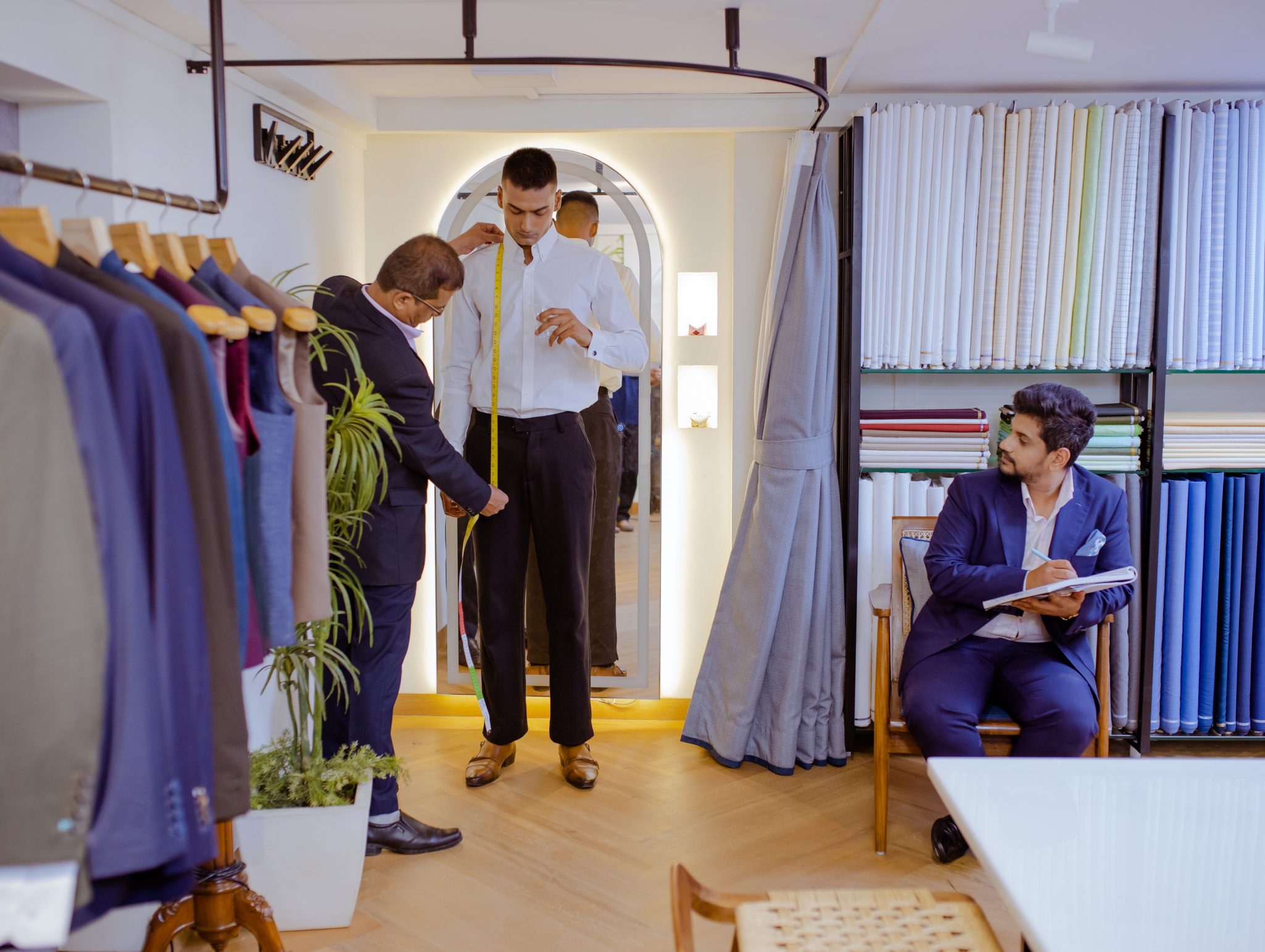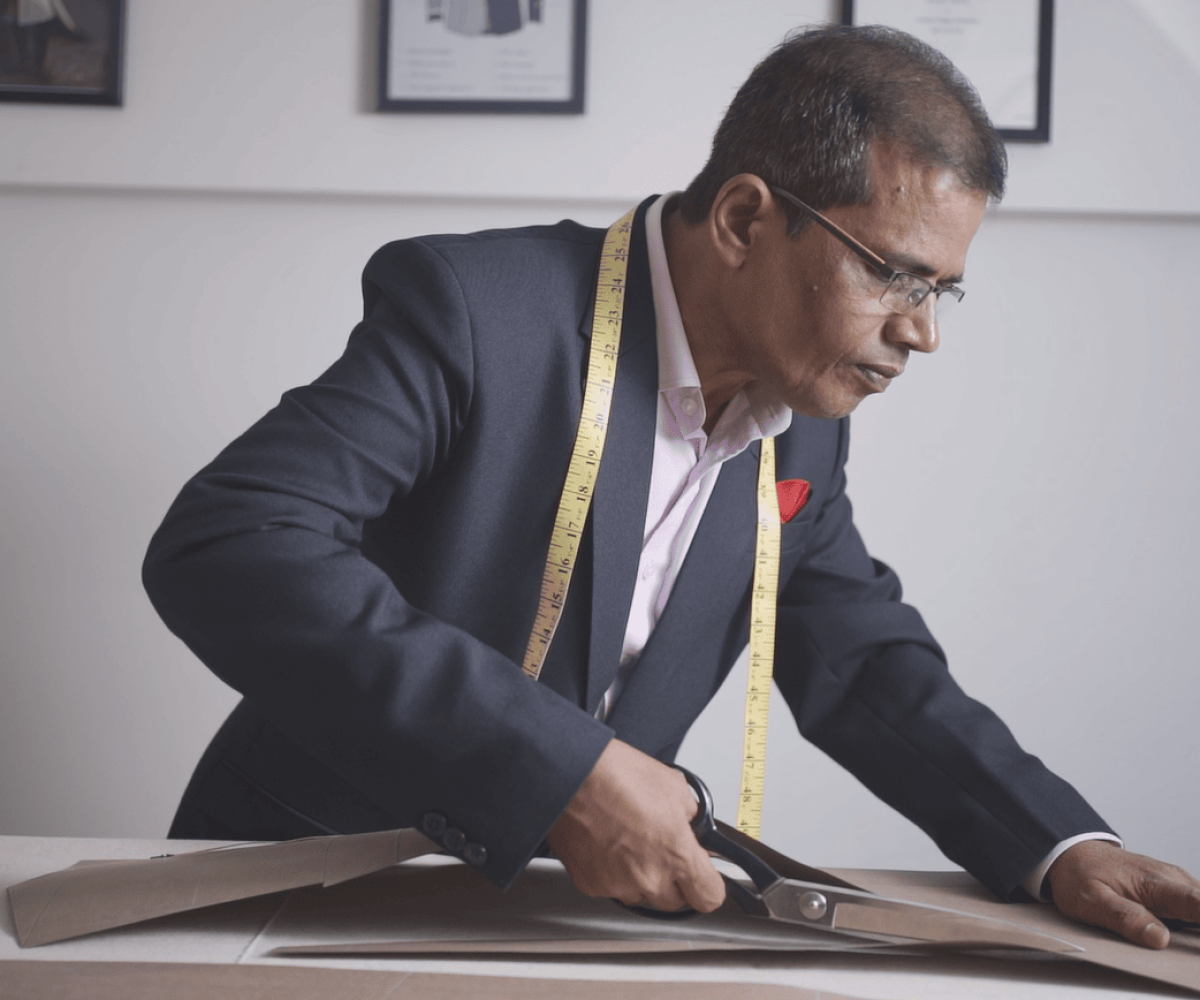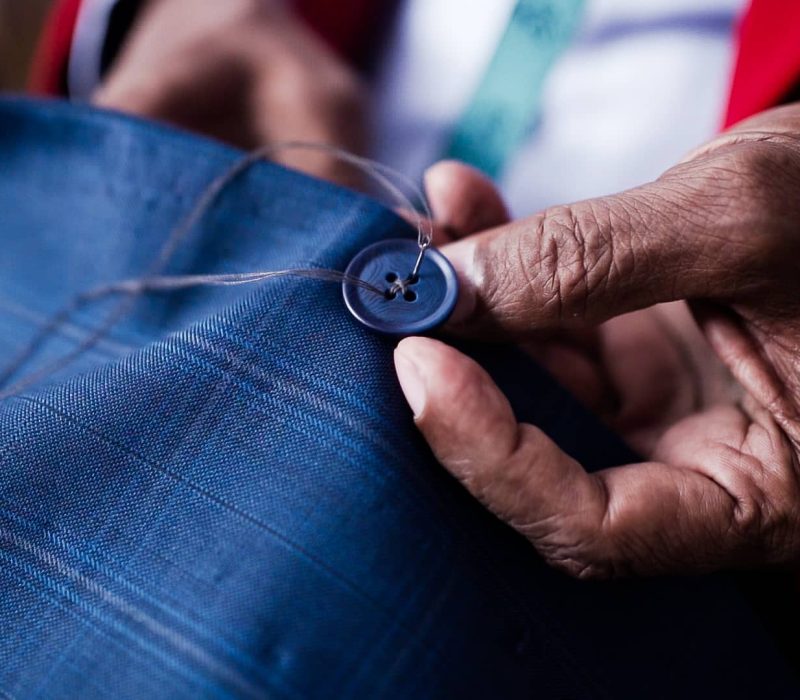
BEHIND THE SCENES

Initial Consultation
At the first consultation, the customer will be accompanied by an image consultant and a cutter who can take accurate measurements. The image consultant first gets an understanding of the occasion the client is getting the outfit made for. If it’s for a business meeting or conference or for some wedding or just to build out their wardrobe. Once we understand their purpose, we invest time in building a deeper relationship with our client to learn more about them, their personality and their preferences. Based on this, we curate a bunch of cloth options from our fine collection sourced from numerous mills based in both India and Italy. The consultant then designs an outfit that authentically represents you!
Then, we will take upwards of 30 measurements keeping the garment’s expected fall in mind. Along with standard measurements, we have specially added measurements to ensure that we are measuring not only the size but also the shape of the wearer. For example, the shape of your back, shoulder type, and so on.
We take images of the client from the front, rear, and sideways for our head cutter to consider while making the garment.
Pattern Cutting
To begin, a unique design is constructed on brown pattern paper using the measurements provided—a kind of blueprint for the garment to come.
Trimming
The given pattern is then laid out on the fabric, with chalk lines created to transfer the ‘plan’ to the fabric. At specific seams, an extra allowance is kept when trimming the material. This allows our tailors to make alterations to the garment while it is being made or later in the suit’s life if the client’s body structure changes. All of the material trimmings, such as canvassing and linings, are also trimmed to size at this point.
Construction
The garment is then entrusted to a group of tailors who specialize in different aspects of bespoke tailoring, such as a coat maker, trouser maker, waistcoat maker, or shirt maker. Canvassing is applied to the cloth by hand, and the suit is loosely made and ready for the first fitting with large, visible stitches called ‘basting.’


First Fitting (Basting)
The fitting is usually more for the Master than the client at this point. Some features of the garment will resemble the end product in appearance: the shape and structure will be there, and some details, such as pockets, will have been traced out and begun.Wecheck for how the cloth drapes on the customer’s.
Adjustments
Once we are happy with the way the garment fits in the first fitting, we take it back to our workroom, pull it apart, recul the suit and make the necessary changes to the paper pattern of the client for use in the future. After the first fitting, the garment is marked with all relevant readjustments, then entirely deconstructed and re-cut. The original pattem is also altered at this point. Patterns are saved on file so that they can be applied to a fresh fabric when a client returns (which we always hope).
Second Fitting
If the first fitting has some major changes, we ask the client to come in for a second fitting to attain a perfectly fitting garment. The second fitting reveals a considerably more refined outfit. Our head cutter will double check all aspects of fit to ensure that the outfit is comfortable to wear as well as drape, length, and overall quality.
Finishing
A specialized tailor takes over control of the suit once all final modifications are made to complete all of the finishing touches. We also provide buttonholes, linings, and pockets, all of which are produced or attached by hand.
Pressing or Final Fitting
The suit is pressed on custom-made blocks before a final fitting to enhance its shape and structure. Clients are also given cleaning and care instructions when they collect their suit, ensuring that it remains timeless.

